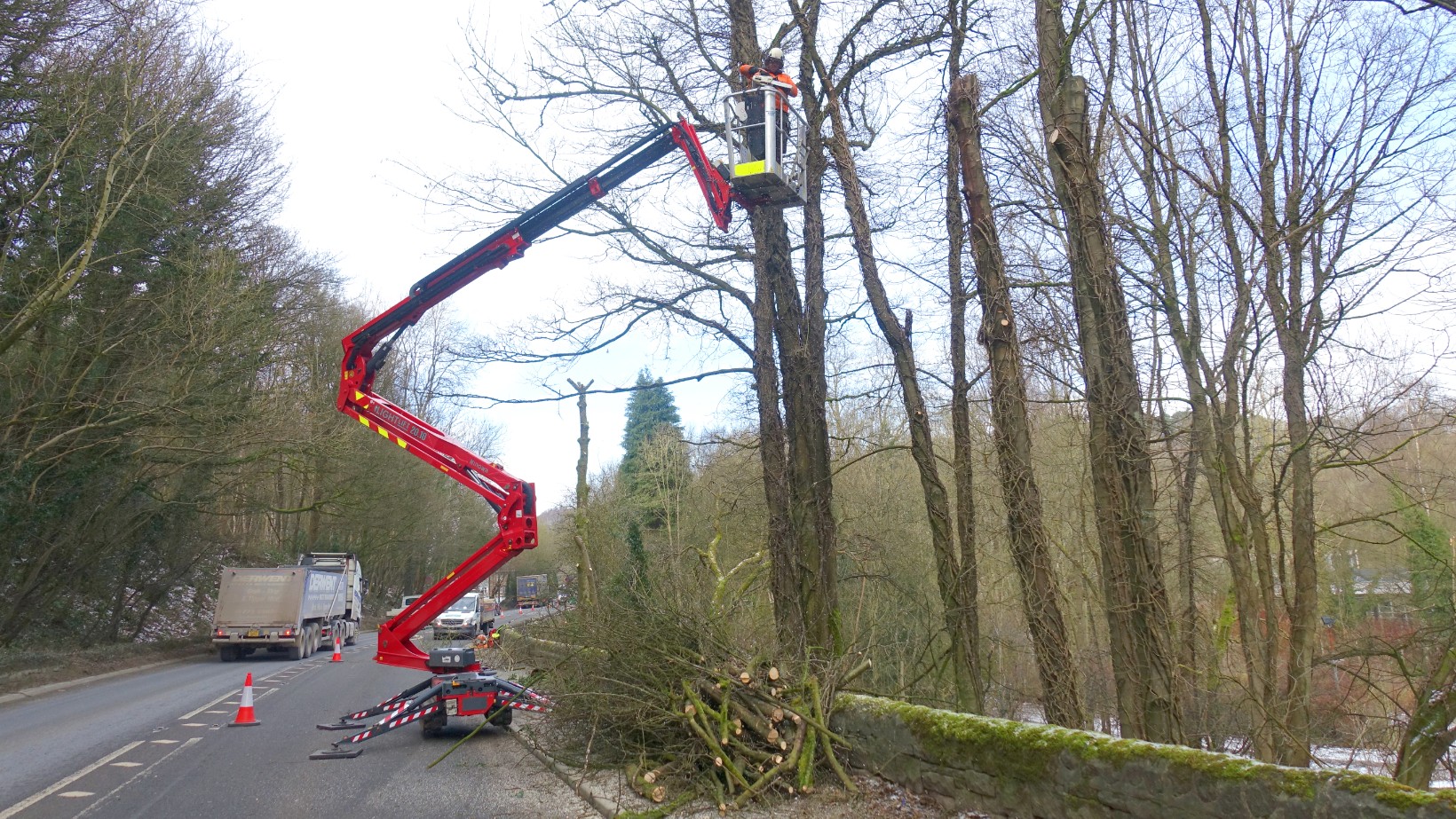

Tree surgeons are increasingly turning to working from aerial platforms as they grapple with the enormous task of managing trees and whole woodlands devasted by the Ash dieback disease.
The challenges of working on trees riddled with the disease has accelerated a process of switching to mobile elevating working platforms (MEWPs) encouraged by safety concerns about traditional rope climbing to manage trees.
Hierarchy of safety
Health and Safety Executive (HSE) regulations for working at height on trees, which came into force in 2005, established a hierarchy of safe practice which states that working from a MEWP must be the first option.
Climbing with ropes should only be considered when working on any tree if it is not practically possible to use the MEWP, for example due to difficulty with gaining access to the tree.
Steve Couling is Managing Director of Access Platform Sales, the UK and Ireland distributor for Hinowa spider platforms, the most popular MEWPs in the UK tree management industry.
He said: “Ash dieback rapidly makes trees very brittle so they are unsafe to climb. Sales of Hinowa spider platforms increased significantly in 2020, and we put down much of this growth to the fact that the devastation caused by ash dieback is coming to a head.
“But working from MEWPs makes sense beyond ash dieback. It is demonstrably safer and more productive than climbing. Our customers also report that it results in healthier tree because they can be managed more effectively, which is better for the trees and related wildlife.”
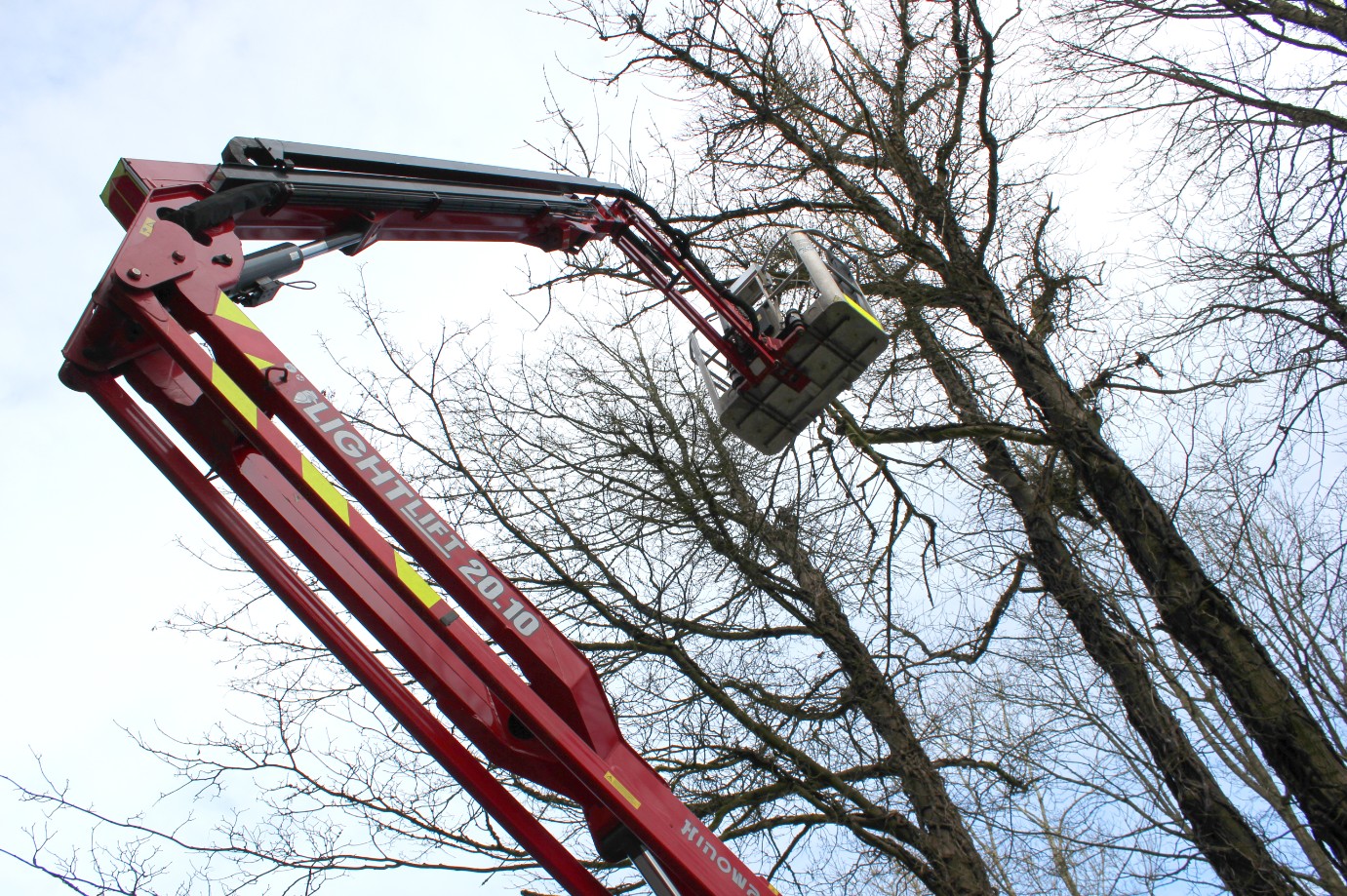
MEWPs for tackling ash dieback
Ash dieback is caused by a fungus called Hymenoscyphus fraxineus. It originated in Asia and was first identified in the UK in 2012 and is now well-established.
Tell-tale signs include dark lesions in the bark at the base of the tree. When the tree is felled, its core is often found to be darker where the disease has taken hold.
A study in Current Biology estimated that 70 million trees could be lost in the UK, at a cost of £15bn to the economy. Large landowners, such as the National Trust, are having to devise urgent strategies to manage the disease and replant trees where they can.
Increasingly, also, they are requiring tree management contractors to adopt working from MEWPs as the primary safe system of work.
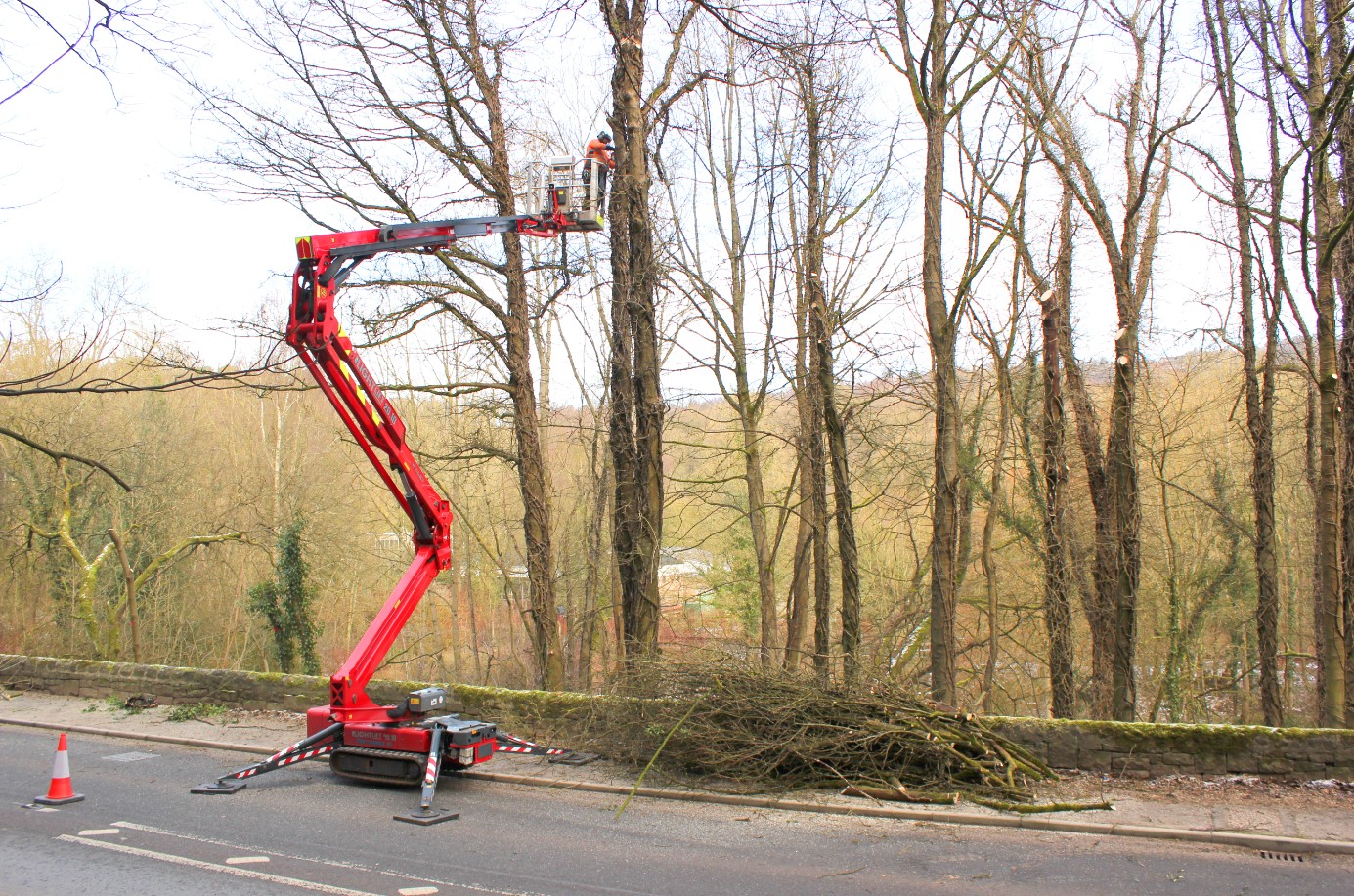
Narrow body for improved access
As with other tree management companies, ash die back is taking a growing proportion of the work carried out by Thompson Tree Services in Matlock, Derbyshire, every year.
It uses a Hinowa Lightlift 20.10 Performance IIIS, a spider platform, so named because it has four outriggers that provide stability when it is set up for working at height.
A key benefit of the machine is that it moves on tracks, so can be driven easily over rough terrain and, with the outriggers stowed, is just 790mm wide, so can be guided through narrow gates into back gardens or between trees in a wood.
In February 2021, Thompson Tree Services was commissioned to fell diseased ash trees, along with sycamores, next to the A6 near Cromford, Derbyshire.
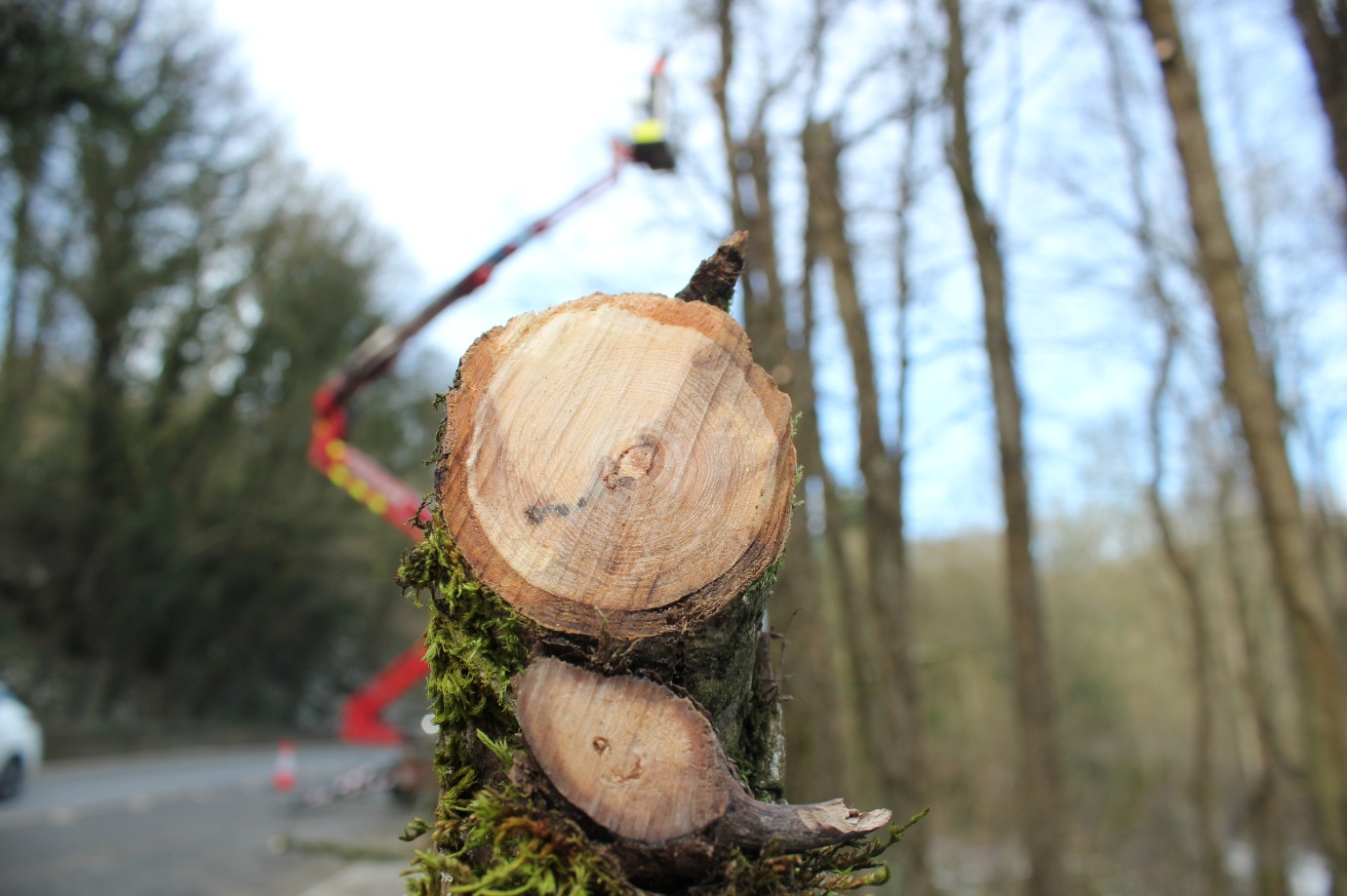
The tell-tale signs of ash dieback – a dark patch covering the right half of a cut branch.
Hinowa ‘excellent’ for tree work
Thompson Tree Services Managing Director Jack Thompson said: “The trees were a danger to road users and pedestrians. Working from MEWPs like the Hinowa, was the only way we could sensibly work on them.
“They are just too dangerous to climb but in many cases can’t be felled directly, as with the work in Cromford, which was right next to a road. With our Hinowa, the job can be done quickly and safely.
“Our Hinowa Lightlift 20.10 is excellent for tree work and provides a very safe platform to quickly reduce and clear diseased trees. This is also beneficial along roads to keep traffic disruption to a minimum.”
The Hinowa LL 20.10, most popular model in the range for tree surgeons because it can be towed behind a van or 4x4 vehicle, has a maximum working height of 20.15m and an outreach of 9.7m.
The outreach is often as important as working height due to the need to work above obstacles such as other vegetation, buildings or sloping ground.
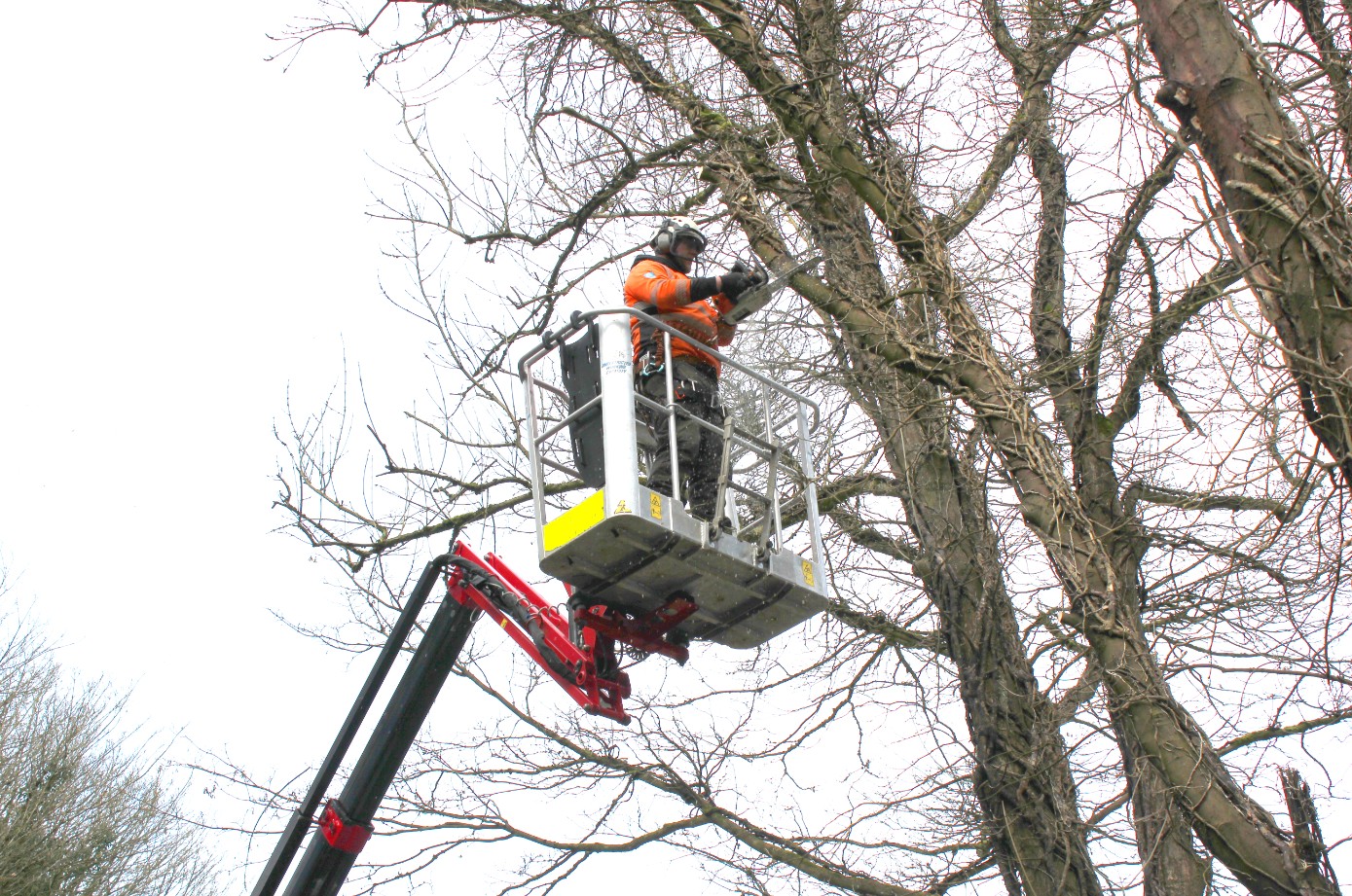
Unrestricted basket capacity
The Hinowa LL 20.10, like all spider platforms in the Performance IIIS range, has an unrestricted basket capacity of 230kg, allowing two operatives to work from it at a time if necessary.
Other features appreciated by tree specialists include dual speed tracking and one touch set up and stow functions which support productivity and enhance safety still further.
APS can provide Hinowa spider lifts with working heights ranging from 12.9m up to 32.5m. Power sources available are petrol; bi-energy diesel and mains electric; bi-energy diesel and lithium battery electric; and lithium battery all electric.
Talk to APS about Hinowa spider platforms for tree surgery and many other commercial and industrial applications. Telephone 01480 891251.

